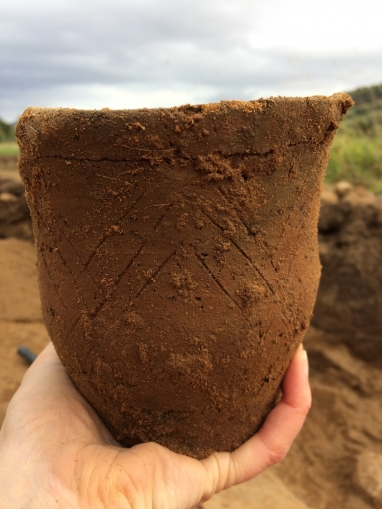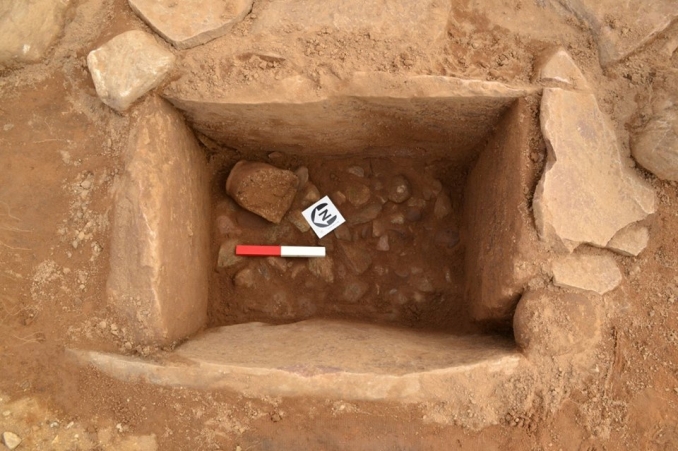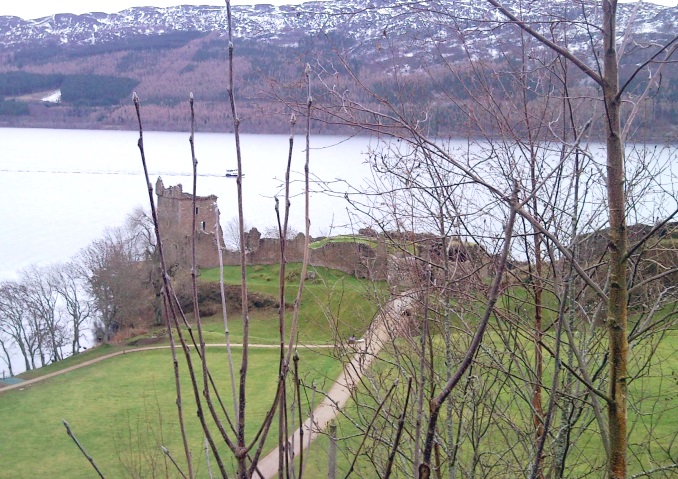Discovery near Loch Ness points to area of ancient ceremonial importance
A discovery of a second 4,000-year-old Bronze Age grave in Drumnadrochit is adding to already increasing evidence that this area of Scotland was a site of significant ceremonial importance in prehistoric times. The latest grave contained a decorated Beaker pot which archaeologists believe may have held an offering to the person who was buried in the cist (ancient coffin or burial chamber). Excavations on the site have been undertaken by AOC Archaeology Group which is a Registered Archaeological Organisation (RAO).
Drumnadrochit (Scottish Gaelic, Druim na Drochaid) is a village on the western shore of Loch Ness, home to the legendary Loch Ness Monster. To the east of the village, overlooking the loch, are the ruins of Urquhart Castle. The promontory on which the castle stands was also thought to have a significant historical importance even before the building of Urquhart Castle in the 13th century. A piece of a Pictish brooch dating from the late 8th or early 9th century has been found there. It is also thought to be the site where the Pictish nobleman, Emchath, lived and who was baptised by St Columba in about 580 AD.








